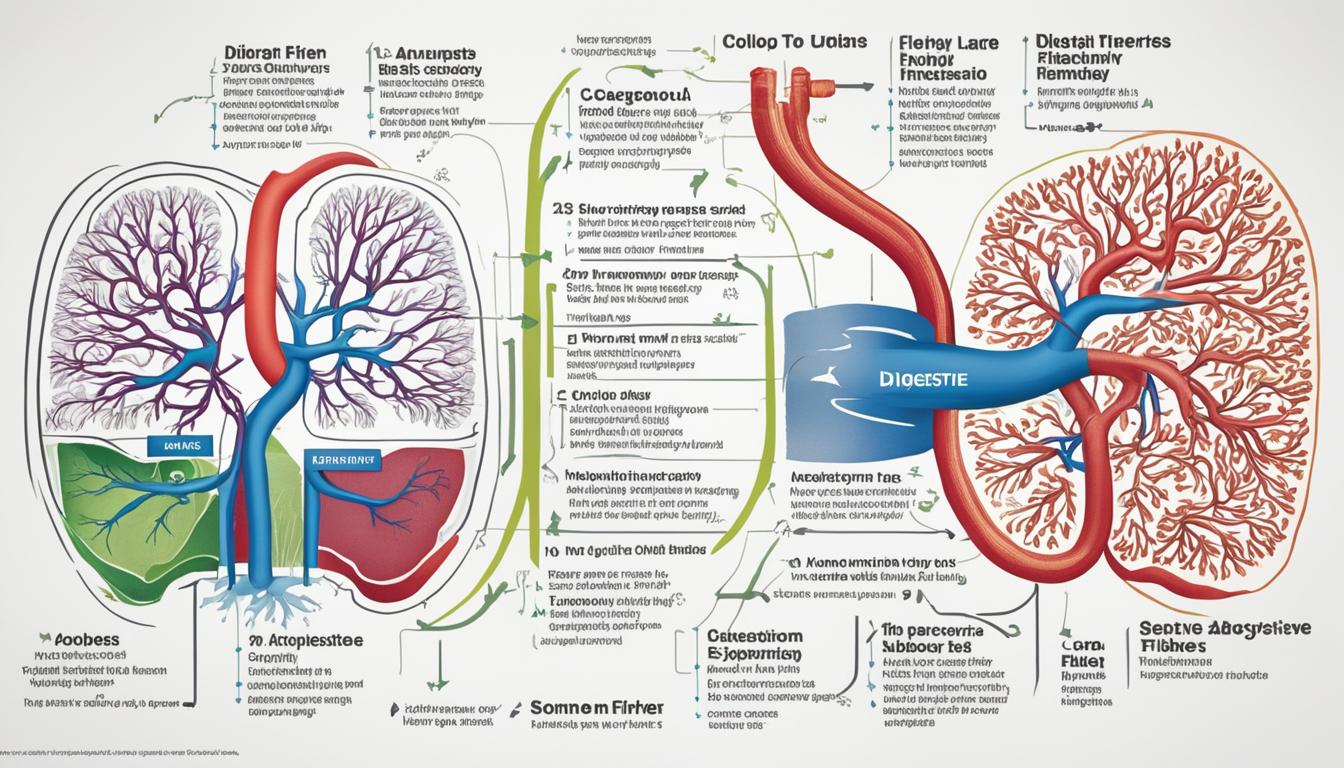Where Are Dietary Fibers Absorbed? Quick Facts for Instant Clarity

As I delve deeper into the world of nutrition and wellness, I've come to appreciate the vital role that dietary fibers play in our overall health. These fibers, found in a variety of plant-based foods, are known for their ability to support digestion and promote well-being. However, have you ever wondered where exactly these dietary fibers are absorbed in our bodies?
The process of fiber absorption takes place primarily in our gastrointestinal (GI) tract, more specifically in the small intestine. The small intestine, often referred to as the body's nutrient highway, is responsible for breaking down food into smaller components, including dietary fibers.
Once these fibers are broken down, the cells lining the walls of the small intestine absorb them. This absorption allows the fibers to enter our bloodstream and travel throughout our bodies, providing various health benefits.
It's worth noting that different types of fibers may be absorbed at different sites in the GI tract. Soluble fibers, which dissolve in water, are more likely to be absorbed in the upper part of the small intestine, while insoluble fibers pass through the entire length of the GI tract without being fully absorbed.
Understanding where dietary fibers are absorbed is essential, as it helps us optimize nutrient absorption and promote digestive health. By incorporating a variety of high-fiber foods like fruits, vegetables, whole grains, and legumes into our diets, we can ensure an adequate intake of dietary fibers for optimal well-being.
Key Takeaways
Dietary fibers play a crucial role in nutrient absorption as they help improve digestion and regulate the transit time of food through the GI tract.
Soluble fibers, such as pectin and beta-glucan, can form a gel-like substance in the GI tract, which slows down the digestion process and allows for better absorption of nutrients.
Insoluble fibers, such as cellulose and lignin, add bulk to the stool and help prevent constipation, which allows for more efficient nutrient absorption.
By promoting healthy digestion and regular bowel movements, dietary fibers can enhance the absorption of essential vitamins, minerals, and other nutrients from the foods we eat.
In addition to promoting nutrient absorption, dietary fibers also have other health benefits, such as lowering cholesterol levels, regulating blood sugar levels, and maintaining a healthy weight.
Including a variety of high-fiber foods, such as fruits, vegetables, whole grains, and legumes, in your diet can help ensure you get an adequate amount of dietary fibers for optimal nutrient absorption.

| Benefits of Dietary Fibers for Nutrient Absorption |
|---|
| Promotes healthy digestion and regular bowel movements |
| Enhances the absorption of essential vitamins, minerals, and nutrients |
| Slows down the digestion process, allowing for better absorption of nutrients |
| Adds bulk to the stool, preventing constipation and promoting efficient nutrient absorption |
| Lowers cholesterol levels |
| Regulates blood sugar levels |
| Maintains a healthy weight |
In Short, "Where Are Dietary Fibers Absorbed"?
In short, dietary fibers are primarily absorbed in the small intestine. The process of fiber absorption occurs when the fibers are broken down and then absorbed by the cells that line the walls of the small intestine. This is where the nutrients from the fibers can be transferred into the bloodstream.
Soluble fibers, such as pectin and beta-glucan, are mainly absorbed in the upper part of the small intestine. These fibers dissolve in water, forming a gel-like substance that slows down the digestion process and promotes better absorption of nutrients.
On the other hand, insoluble fibers, like cellulose and lignin, tend to pass through the entire length of the gastrointestinal (GI) tract without being fully absorbed. These fibers add bulk to the stool, helping to prevent constipation and facilitating more efficient nutrient absorption.
To optimize nutrient absorption and promote digestive health, it is important to understand where dietary fibers are absorbed. By including a variety of high-fiber foods in your diet, such as fruits, vegetables, whole grains, and legumes, you can ensure that you are getting the necessary dietary fibers for optimal nutrient absorption and overall wellness.